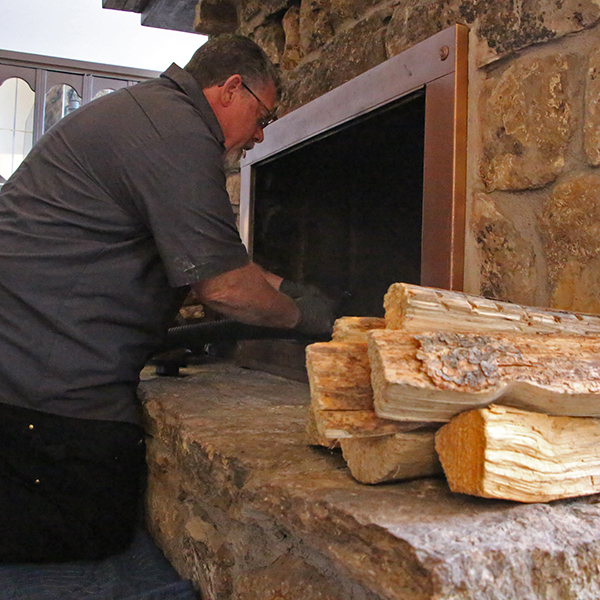Before firing up your wood-burning fireplace or stove this winter, did you think about creosote build-up? Did you know that understanding creosote build-up and its risks and solutions is essential? Taking creosote-related precautions paves the way for you to safely luxuriate in all the joys of home fires. Below you’ll find all that you need to know about creosote and its related hazards and solutions.
 What is Creosote?
What is Creosote?Creosote is a tar-like substance created only by wood fires. As the smoke produced by wood fires exits the chimney flue, the cooler temperatures at the top of the flue cause highly flammable deposits to stick to the inside of the chimney liner. Creosote builds up in layers, sometimes to the extent that the flue is severely obstructed, resulting in thousands of costly chimney fires every year. There are three forms of creosote created by different conditions that may exist, such as incomplete combustion or an oversized flue.
The more creosote buildup there is in your chimney, the greater the chances that an ember will ignite a chimney fire. Many people don’t realize that chimney fires are dangerous. It is rare for a chimney fire to extinguish itself before structural damage has occurred.
A chimney inspection should always be scheduled after a chimney fire because the chimney flue may have been damaged. When a chimney flue isn’t intact, but the fireplace is used, anyway, the home and family are placed at dual risk. The two potentially deadly hazards are a destructive house fire and exposure to carbon monoxide.
Schedule creosote removal with qualified chimney sweeps. Only one of the three forms of creosote is simple to remove using a professional chimney sweep brush. Special equipment is required for the removal of the other two kinds of creosote. Instead of consisting of only soot-like materials, a second form looks like hard flakes of tar. When the third type occurs, it looks as if someone poured tar down the chimney. There are times when a flue liner replacement is the only solution for the third type of creosote.
Creosote is inevitable if you burn wood fires. However, the amount of creosote buildup in your flue liner is somewhat in your control. You will minimize creosote buildup if you:
 FlameMaster Can Remove All Forms of Creosote
FlameMaster Can Remove All Forms of CreosoteBefore you schedule creosote removal, it’s good to ask if the chimney sweeps you hire are qualified for the job. At FlameMaster, you can rest assured that our F.I.R.E.-certified chimney inspectors have unsurpassed levels of skill and experience to perform chimney inspections, chimney cleaning, masonry repair, and all other related services. Of course, we have the equipment to tackle creosote removal of all three forms of creosote, as well. Give us a call for services and to learn more about creosote build-up risks and solutions.
Call us at 719-661-3277 or fill out this simple contact form. Our friendly chimney experts are happy to assist.